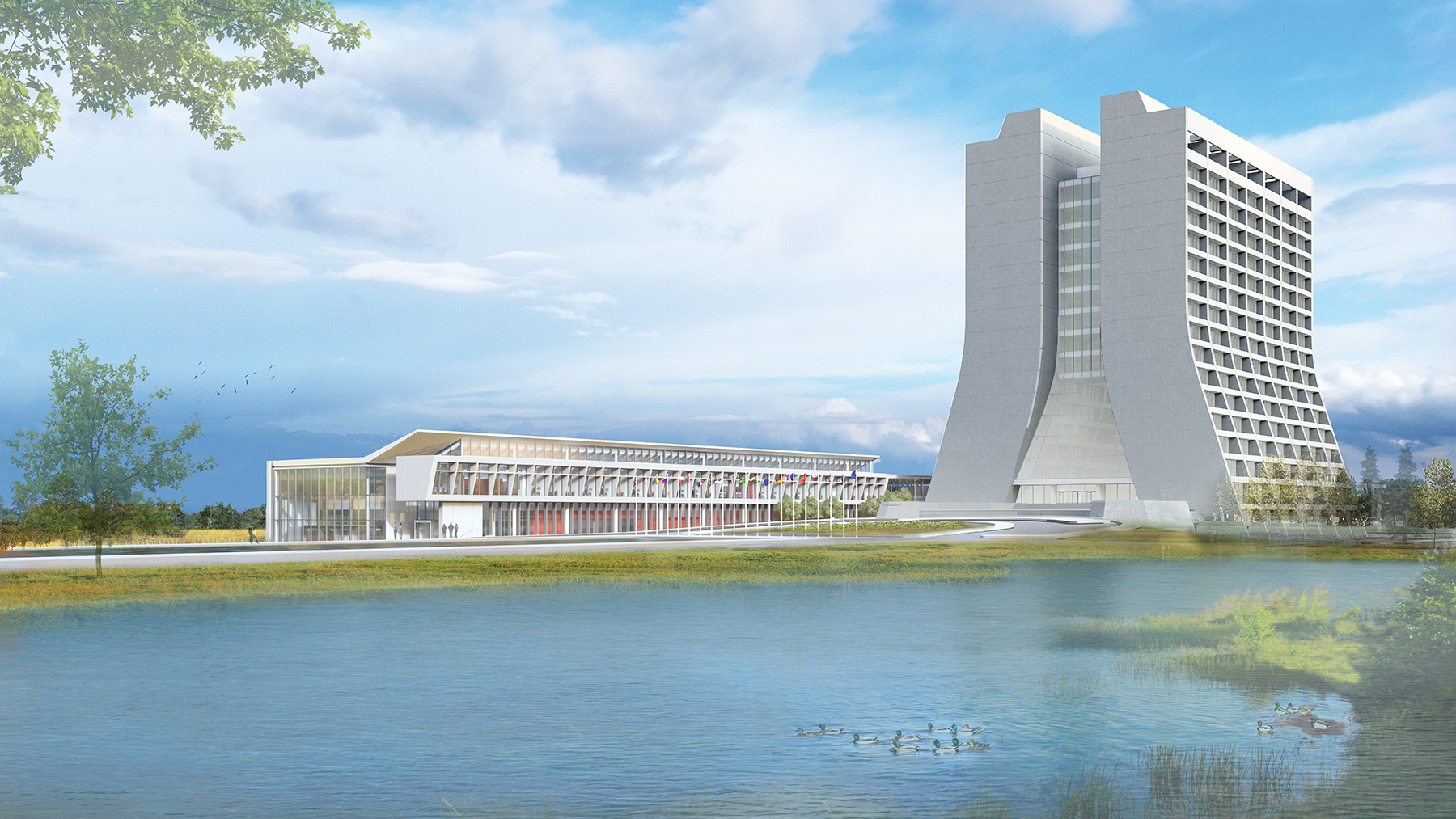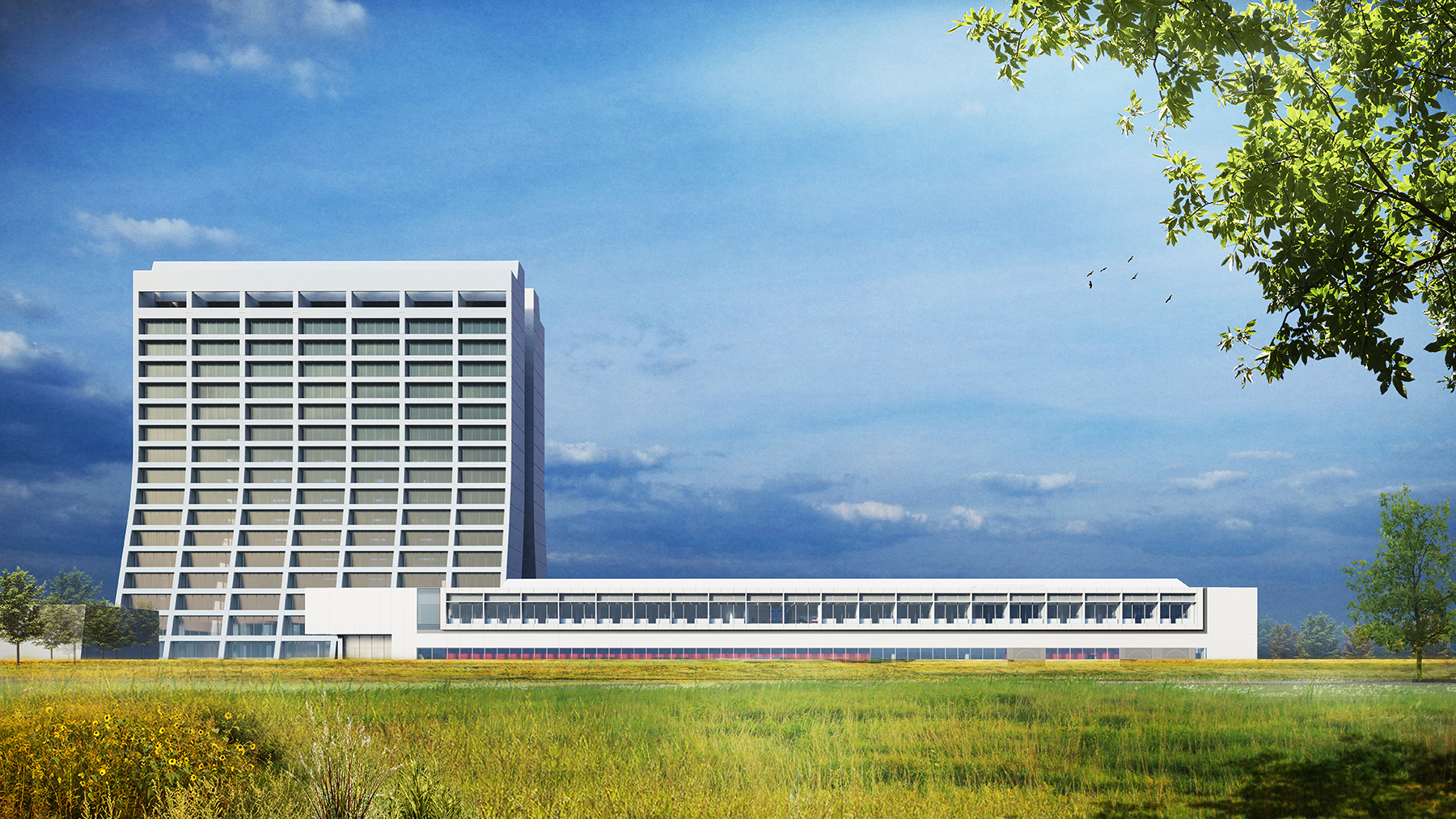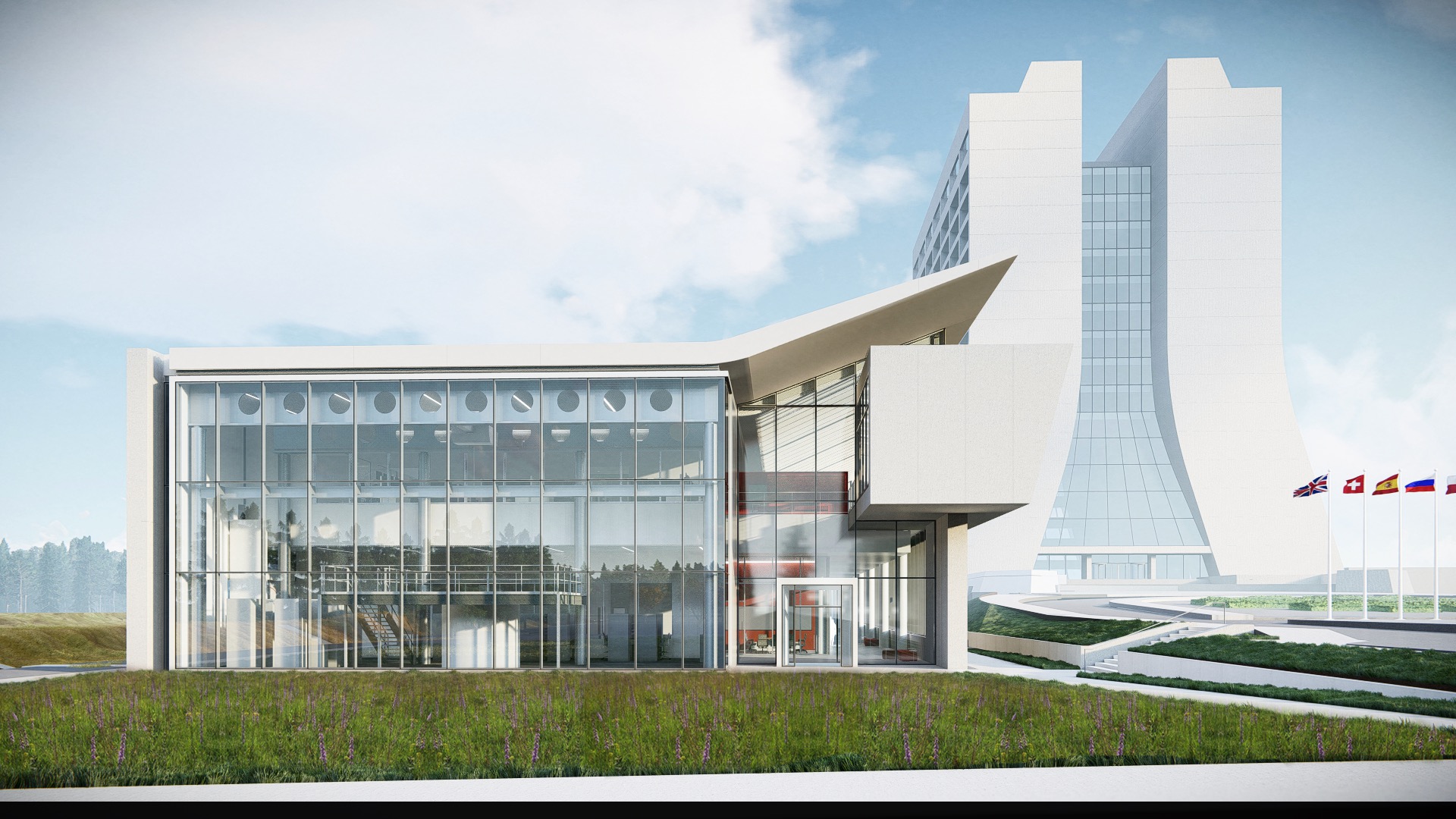
A new laboratory and office facility known as the Integrated Engineering Research Center is planned for the campus of Fermi National Accelerator Laboratory, in Batavia, Illinois. Fermilab is a U.S. Department of Energy national laboratory specializing in high-energy particle physics.
The new two-story, 85,000 sq ft IERC facility will be constructed adjacent to Fermilab’s iconic Wilson Hall, a 16-story tower that slopes inward on its east and west sides. Just a movement joint will separate the two buildings, and the southern end of the IERC will provide access directly into Wilson Hall via an enclosed, two-story connection.
The IERC will be the first purpose-built laboratory/office building constructed on the Fermilab campus since the 1970s, notes Brian Rubik, P.E., S.E., the lab’s IERC project manager. It is intended to bring Fermilab’s engineers and technicians — who over the years have become scattered at various sites throughout the campus — near the scientists working in Wilson Hall for more effective collaboration on research and experiments, Rubik explains.
The building was designed by the architecture firm Perkins + Will. The international engineering firm Arup is responsible for the project’s structural and acoustical engineering as well as the mechanical, electrical, and plumbing systems, fire and life safety consulting, lighting design, information technology and communications design, and audiovisual design. TERRA Engineering Ltd. is the project’s civil engineer and Patrick Engineering Inc. is the geotechnical engineer.
The IERC was originally conceived as a three-story structure, but the design was scaled back to two floors when a larger ground floor footprint was needed to accommodate the laboratory spaces. The resulting larger second floor will house all the additional office space and hybrid labs, which contain both desk and lab space, notes Rubik.
Measuring 415 ft long in the north-south direction and about 100 ft long in the east-west direction, the IERC will be constructed on a former parking lot and small pond that was drained and filled in. The floor-to-ceiling heights will measure roughly 22 ft on the ground floor and roughly 16 ft for the upper level, says Brian McElhatten, P.E., S.E., M.ASCE, an associate principal who leads the structural engineering group in Arup’s Chicago office.

Underground
Concrete spread footings were chosen for the foundations because the site’s bedrock is as much as 80 ft below grade, McElhatten says. Located in the heart of the Fermilab campus, the site includes multiple utilities that must be moved and a concrete utility duct bank that will be demolished, notes Rubik. It is also constrained by a nearby roadway, a raised earthen berm that helps shield an underground particle accelerator line, and other obstacles.
Although the IERC will not have underground levels, the southern end of the building — adjacent to Wilson Hall — will be located partially in a shallow excavation. Above grade, the structure will feature steel framing with a concrete-on-metal deck slab as the elevated floor system, says McElhatten. The lateral support system will feature concentric steel braces that had to be concentrated at the northern and southern ends of the structure to avoid interference with the laboratories and collaboration spaces. Likewise, the building’s steel columns will not necessarily align from floor to floor because of the need for flexibility in the program spaces, McElhatten notes. Multiple transfer systems are required between the different column grids.
Vibration dampening
The ground floor will feature an 8 in. thick reinforced-concrete slab, with separate sections of 12 in. thick slabs to accommodate the most vibration-sensitive laboratory spaces and equipment, says Robby Deem, LEED AP BD+C, an Arup senior acoustic consultant. Isolation joints at the perimeters will enable the individual slabs to move independently of one another, and the building’s steel columns will be located outside these lab spaces to limit the need for rigid connections.
On the upper level, sound-absorbing finishes in the ceilings and on work surfaces will help control ambient noise levels. Sound attenuators will be installed on many of the mechanical systems to further control noise. The mechanical systems will be installed within the upper level of the research center, rather than on the roof, for aesthetic reasons; the windows on Wilson Hall’s eastern facade will directly overlook the IERC building, says Rubik.
Placing the mechanical systems inside the building posed challenges to the design because of the need to bring large volumes of air into the core of the facility. The solution required careful coordination with other members of the design team to ensure that the necessary air volumes could be achieved without creating too much noise, Deem says. “This project is a shining example of balancing function, aesthetics, and complicated engineering requirements,” Deem concludes.

To provide future flexibility, the upper level — with the exception of the mechanical spaces — is being designed for a live load of 100 lb per sq ft rather than the more typical 50 lb per sq ft, McElhatten notes.
A two-story open space at the north end of the IERC will house a laboratory known as the Argon Cube, where experiments involving liquid argon and cryogenic systems will be conducted. The lab will feature an overhead 25-ton crane that will run along the bottom flange of a roughly 5 ft deep, castellated beam at the ceiling, McElhatten says.
The building’s western facade will feature a series of sloping clerestory windows that were designed in response to Wilson Hall’s sloping exterior to enable natural light to penetrate deep into the IERC labs and offices, says Rubik. These windows feature a roughly 8 ft cantilever along much of their length and a roughly 20 ft cantilever toward the north end, notes McElhatten.
Construction of the IERC is expected to start later this year; the facility should open in 2022.



